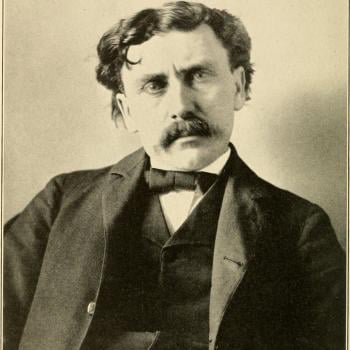I’m reading a biography of one of my favorite authors, whose work has impressed and excited me for over forty years now. This is Patrick Leigh Fermor (1915-2011), subject of a dazzling new book by Artemis Cooper. The problem in describing Leigh Fermor’s work is that it is so diverse, and so impressive, you don’t know where to begin. Let’s just say, though, that he is assuredly the greatest travel writer of modern times. If he was not explicitly a religious writer – and he certainly was not – his works offer enormous resources for anyone interested in the history of Christianity across Europe and the Middle East, especially the Byzantine and Orthodox tradition.
Describing his life sounds as if you are inventing a singularly improbable fictional character. One recent reviewer notes that through his 96 years on this planet, he “survived enough assaults on his existence to make Rasputin seem like a quitter. He was car-bombed by communists in Greece, knifed in Bulgaria, and pursued by thousands of Wehrmacht troops across Crete after kidnapping the commander of German forces on the island. Malaria, cancer and traffic accidents failed to claim him. He was the target of a long-standing Cretan blood vendetta, which did not deter him from returning to the island, though assassins waited with rifles and binoculars outside the villages he visited. …. He smoked 80 cigarettes a day for 30 years ….. at the age of 69 he swam the Hellespont – and was nearly swept away by the current.”
Leigh Fermor’s horrendous schooldays ended with his inevitable expulsion in 1933. He then did what any normal young man would have done in the circumstances, namely begin a solo hike to Istanbul. He thus walked across Europe in the last days of its old glories, often encountering feudal societies that would not have been out of place four hundred years earlier. Originally planning to travel as a humble student, he soon found himself receiving the hospitality of countless noble lords, as he bounced from castle to castle, schloss to feudal estate, margrave to duke. He recorded these adventures in two books so enchanting and so superbly written that they defy description, namely A Time of Gifts (1977) and Between the Woods and the Water (1986). His admirers long hoped that even in his nineties, he might yet complete the third volume of the planned trilogy, but sadly, we were thwarted.
Leigh Fermor does a magnificent job of drawing you in to his adventures, as you share his frequent discoveries and academic explorations. Why does this Christian community behave like that? How did Greece’s Christians survive their long night of Ottoman persecution? Do the women of this modern village really preserve songs and musical styles that hark back to Byzantium, or to ancient Greece before that? Such questions illuminate every page of his two great books on Greek regions, Mani (1958) and Roumeli (1966). (He spent the second half of his long life in Greece). It is impossible to read these books – the European travels and the Greek miniatures – without being immersed in the history of Christian Europe in all its diversity. And not just Christian. Some poignant passages in Time of Gifts and Between the Woods and the Water record his meetings with ancient Jewish communities, who would soon face destruction and outright extermination.
Not that he necessarily shares the faith traditions in question, but he is hugely informative on monastic and mystical spirituality. In 1957, he published A Time to Keep Silence, a meditation on solitude and solitary mysticism, as exemplified through several monastic settings. On a trivia note, the book was published by a firm owned by his great friend, Ian Fleming. Leigh Fermor knew everybody.
Just when you think you have a grip on his work and his interests, then you discover his 1950 book, The Traveler’s Tree, an account of the Caribbean in the last days of colonialism. Although you may not have read the book, you certainly know large sections very well, as his account of Haitian voodoo has been so widely quoted, cited, and outright plagiarized by later authors, making it the standard source for most subsequent works on that theme. Ian Fleming, for instance, quoted him at length in Live and Let Die. Compared to Leigh Fermor, though, James Bond was a desk-bound civil servant who didn’t get out enough.
Please take this post as a very serious recommendation of some stunning books. Most are easily available through attractive New York Review of Books editions.












